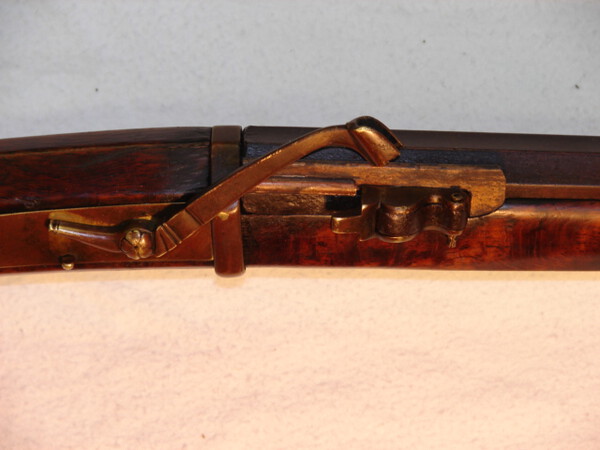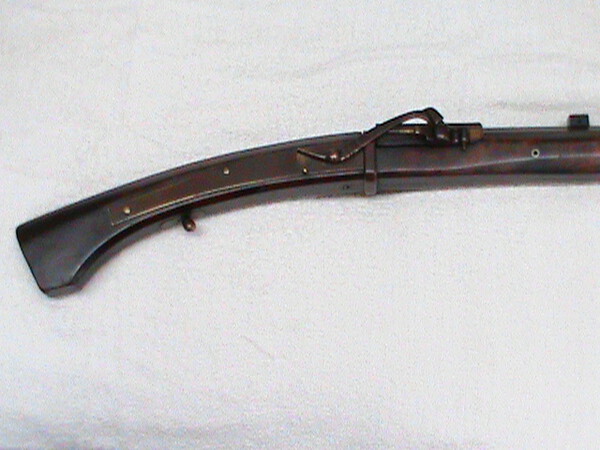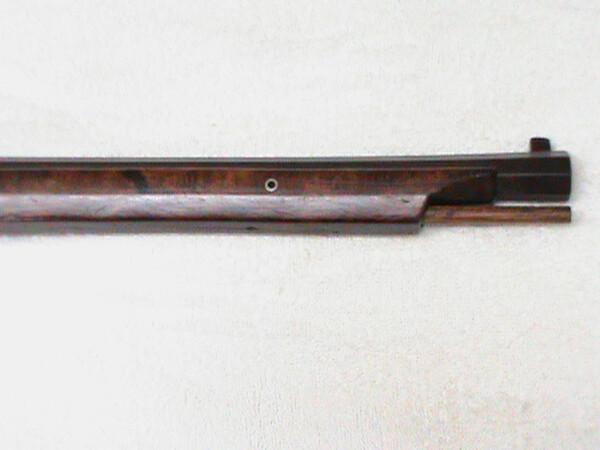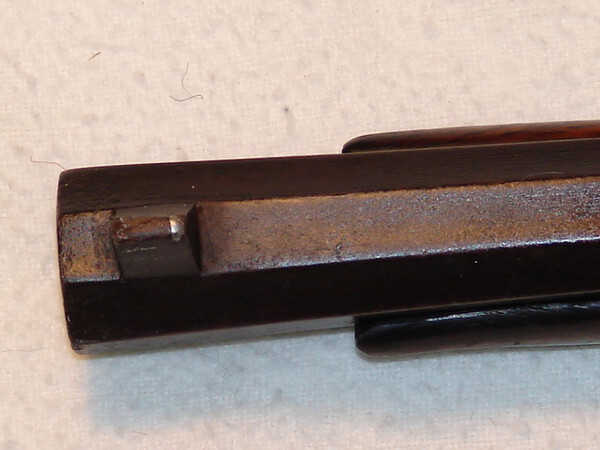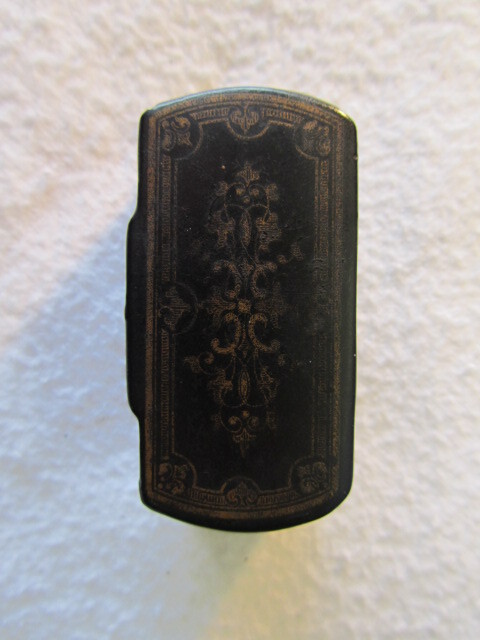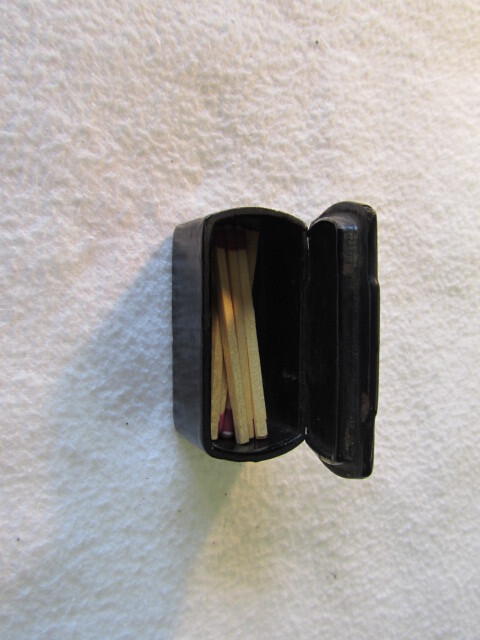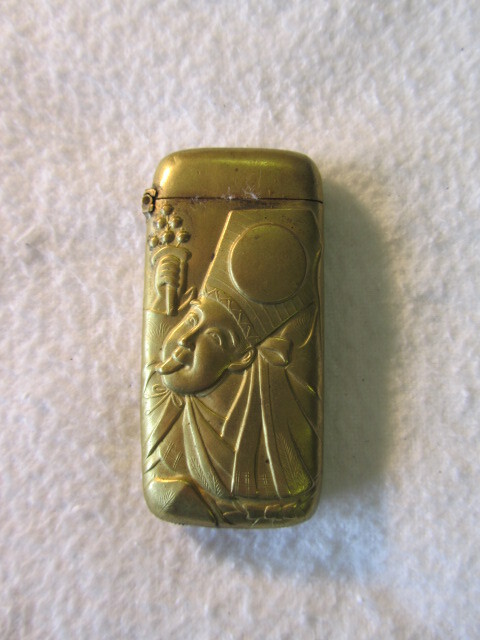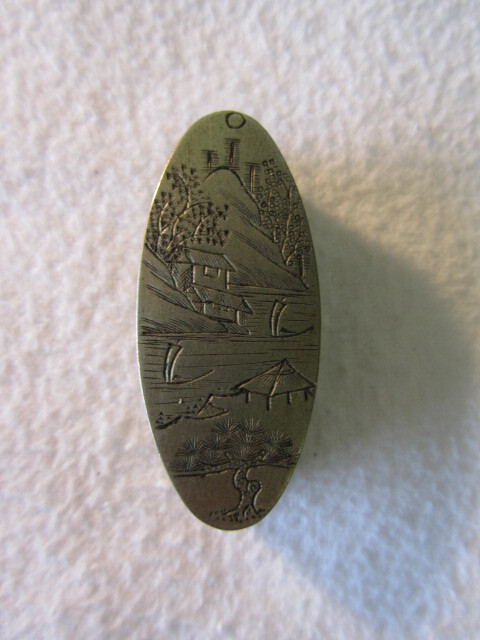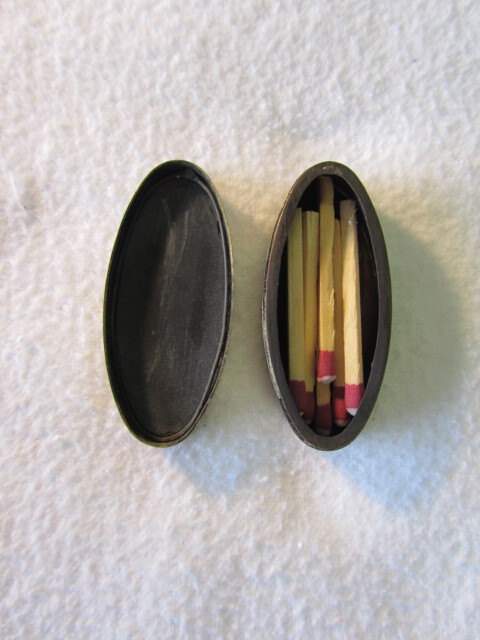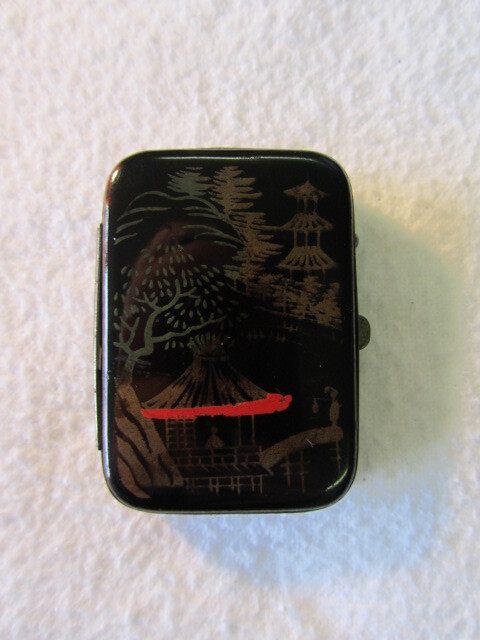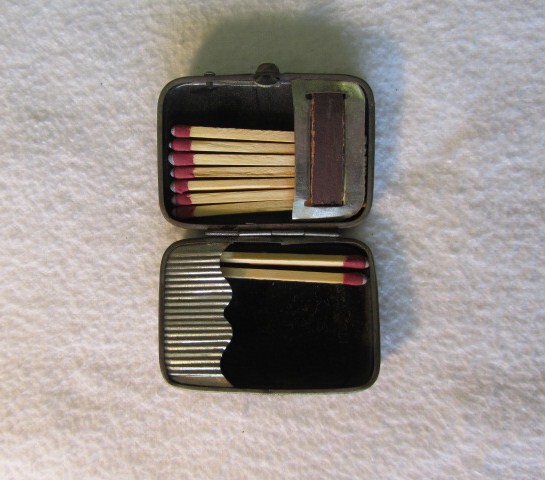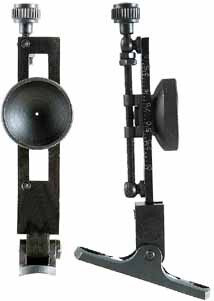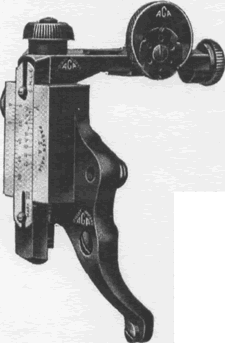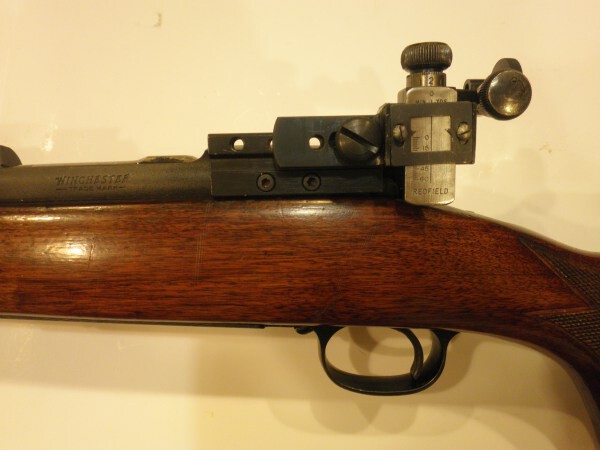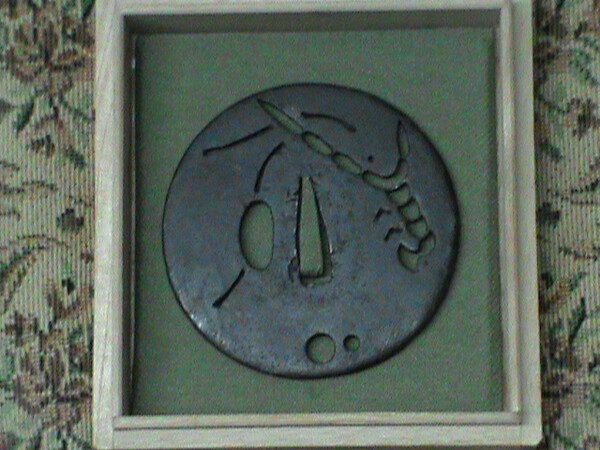-
Posts
1,397 -
Joined
-
Last visited
-
Days Won
4
Content Type
Profiles
Forums
Events
Store
Downloads
Gallery
Everything posted by watsonmil
-
Dear Dan C, You just said : " Not sure if most people realize how much more difficult it is to make a barrel than a sword " Dear God, ... Dan see if the RCMP will issue you a concealed handgun carry permit. Your life is now in mortal danger. OH, OH my sides are splitting from I guess we're pretty safe as the tunnel vision nihonto enthusiasts would not normally lower themselves to look in upon us ! ... Anonymouse Ron
-
Dear Brian, Thought I'd better get this posted before you're off to bed. Congratulations on the new acquisition. Two make a collection you know ! I shall be interested to see if Piers can come up with a date for when the Kyubei family were producing firearms. I note slight differences in the Mei, so perhaps father and son ? Anyways I attach a series of photos of my gun, ... and look forward to seeing yours posted. ... Ron Watson
-
Dear Geraint, Thank you for adding the link. I searched the internet for a more simplified version but amazingly could not come up with anything. Although on reading thru the link provided, it covers the casting of cannons, ... I at least found it somewhat confusing. I have somewhere in my library a detailed ( but more simplified ) description but I cannot find it ( actually it is possible I've sold the book ). Perhaps Ian Bottomley knows the book, or can give a simplified description. I will as time permits search a bit more. ... Ron Watson
-
Dear Dan C, Rather than taking up space writing a lengthy description of casting barrels, here is a video to watch : https://www.youtube.com/watch?v=fmeBW1y6E0c ... Ron Watson
-
Dear Gary, Ah, ... it is good to have a metallurgist on the board. Agreed cannon barrels were cast, .... but I disagree with you on much smaller items of brass and/or bronze not being able to be forged. It all depends on getting the temperature just right. It also depends upon the alloy being used. By example: Please refer to : and . Please NOTE : http://www.himalayanbowls.com/singing-b ... tion/?p=24 . Now then, ... you are going to tell us that the forging of bronze is not possible ? I just happen to own a Japanese singing bell, ... please see : viewtopic.php?f=9&t=2554&p=65112&hilit=bell#p65112 Scroll down the page. I did not say that brass/bronze Japanese gun barrels were forged. I did say, ... I did not know. I gave an opinion on two separate examples of Brass/Bronze Japanese gun barrels. ... Ron Watson
-
Dear Eric, Without having the barrel in hand, I cannot give a definitive answer. The muzzle leaves me with the impression that it is cast. My answer is I just do not know. ... Ron Watson
-
Dear Dan C, The reason breach plugs were threaded was probably in the case of European manufacture a more convenient safer way of closing off the breach than trying to forge weld the breach plug in place with its inherent possibilities of air spaces and poor joining of barrel to breach plug. Remembering the Europeans had by a fairly early time developed the tap and die ( I have tried to discover the invention date of the this specialized tool, but to no avail ) whereas in Japan such technology arrived rather late. It was probably still in Japan a risky unsure process this welding a cylinder of metal to the inside of a barrel and therefore they also adopted a crude system of using a threaded breach plug. In the case of a modern howitzer which you give as an example of the lack of need for a threaded breach block, ... the answer lies in the fact that the brass cartridge case expands on firing to provide a gas seal and the wedge breach closure does little more than hold the pseudo breach plug ( brass casing ) in place until the moment of firing and the reduction of gas pressure upon the projectile leaving the barrel. ... Ron Watson
-
Dear Dan C., Yes, ... the breach plug ( bizen ) fit snugly into the square inlet in the stock. Along the bottom of a Tanegashima barrel are small half moon shaped tits with a hole ( ana ) which lined up with pin holes in the side of the stock thru which passed a bamboo peg ( mekugi ) for securing the barrel to the stock. I totally agree with you that the Japanese of the time rarely removed the breach plug ( bizen ) for cleaning the barrel. Although we can always find exceptions the majority of Tanegashima employed threaded breach plugs ( bizen ). Most European gun makers also employed threaded breach plugs usually so tightened as to be nigh on impossible to remove as the breach plug also had attached a protrusion to attach the barrel to the top of the stock and it was important that this be exactly placed and repeated removal of the breach plug would have eventually caused the breach plug to get out of alignment. Some makers attached the breach plug by sweating into place ... and these breach plugs were impossible to remove. I know of no maker whom welded the breach end of the barrel closed ... Japanese or European. Although it is possible for the powder of a loaded firearm to absorb moisture causing a misfire, ... it is rare. What most likely happened to your friend, is that bringing the gun into a warm environment for the night after having been exposed to a cold environment during the day caused condensation which allowed moisture to enter the vent and dampen the powder at this critical point. I have unloaded 3 separate Tanegashima which had been loaded in some cases perhaps 200 years ago and the powder was as dry as the day it had been originally loaded. I have also unloaded an English percussion rifle and the powder was almost solidified. It all depends upon how and where and in some instances the climate the gun was stored in. ... Ron Watson
-
Dear Dan C., Probably more often than not, ... the inside of the barrel was cleaned without removal of the breach plug. This is accomplished by first plugging the vent from the pan to the barrel with a small piece of wood ( so water does not leak out of the barrel at this opening ). Hot water is then poured down the barrel and emptied out repeatedly ( hot water is a great absorbent of black powder residue ). After repeating this several times, ... the plug from the vent is removed and a smaller amount of hot water is poured down the barrel followed by a cleaning rod with cloth attached. This creates a hydraulic effect forcing water out of the barrel thru the vent thus cleaning any residue from the vent. Any excess water is emptied by tipping the barrel. A clean cloth is then by cleaning rod run up and down the inside of the barrel to remove any left over powder residue. This is repeated using a clean cloth each time until no more residue remains. If the gun is to be stored for some time another cloth dampened with a small amount of oil is run up and down the inside of the barrel to protect it from rust. Now to address your second question, ... the rear end of the gunstock is inletted to accept the breach plug ( bizen ) of the barrel and a brass band encircles the stock at this point to give added strength. The barrel being thus inletted anchors this section of the barrel to the stock. See link to photo of this inletting : http://s557.photobucket.com/user/redhug ... 0.jpg.html The reason black powder Muzzle Loading firearms are often found loaded is that ... in order to unload the gun ( supposing no shot was fired ) ... the easiest way to accomplish this was to fire off the gun anyway, ... but this then necessitated the tedious task of cleaning the barrel. Since without the match the gun could not be fired, ... the gun was perfectly safe to leave loaded and on top of that left you with the advantage of simply lighting a match and inserting it in the serpentine and you were ready to shoot without having to first load the firearm with powder wad and ball. ... Ron Watson
-

Very interesting Netsuke on eBay
watsonmil replied to Jim Rogers's topic in Auctions and Online Sales or Sellers
Dear Jim, Yes, ... very interesting that some people have not yet realized that these Teppo Netsuke are modern day copies. I prefer to call them for what they are ... FAKES. Although there are a few original Teppo Netsuke, ... this is not one of them. ... Ron Watson -
Dear All, Too many years a gun dealer. Virtually all gun dealers ( at least English speaking dealers ) refer to bronze as brass when speaking of firearms. You will rarely hear the word bronze used for instance when a dealer is describing an English Blunderbuss. It will almost always be described as a Brass Barreled Blunderbuss. As wrong as it may be, the word Brass is often and incorrectly used instead of Bronze in firearm circles. So forgive me, ... old habits are hard to break. As you will see I'm not alone : https://www.google.ca/search?q=brass+ba ... 36&bih=718 ... Ron Watson
-
Dear Dan, 1. A breach plug allowed for its removal from the barrel thus facilitating the cleaning of the barrel by running hot water and a cloth wipe all the way from breach end to muzzle end. Black powder residue is highly corrosive to iron and therefore the gun must be cleaned after firing to prevent rust and pitting. 2. A breach plug being screwed into place allowed for the anchoring of the breach end of the gun into the gun stock. ... Ron Watson
-
Dear Peter, That is a sticky question. I have never examined a brass barreled Japanese gun ( except for the cannon I own and it was definitely cast ) ... normally a pistol, as I know of no long muskets having brass barrels. Now then, ... the later percussion pistols ( European style box locks ) were in all likelihood machined. Of this I am quite certain, ... but rarely, ... we do see brass or bronze barreled matchlocks. Although I have not had one in hand to examine, ... it is possible given their thicker barrels that they were cast, then finished ... but it is also possible that they were forged. Brass or bronze can be forged, cold and hot. All soften when quenched in water and allowed to air cool. Brass and bronze need to be forged at very low heat, less than orange. They are worked mostly cold because they're pretty soft and will move quite a bit when annealed, and can crack while hot forging, by getting it too hot. If working cold the metal must be anneal often. You also have to be sure not to push them too far in one heat, or they will crack anyway. Personally I forge brass or bronze hot, but just an orange colour and I surmise this is the way a Japanese gunsmith worked a brass barrel for a pistol. Notice that the brass barrel pictured below has an iron Bizen ( breach plug ) which would cause one to suspect the barrel to be forged rather than cast. If it were cast, ... it would be safe to assume ( note I say assume ) the maker would have cast the entire barrel as one piece as was done with cannon. ... Ron Watson
-
Dear Dan, No, ... the Japanese never attempted rifling. All matchlock firearms are smoothbore. ... Ron Watson
-
Gary, NO Japanese gun barrels were ever made from the Lost Wax Process. Few if any barrels in any country were made by this method. ... Ron Watson
-
Dan, The mandrel is removed and the tube heated repeatedly. If necessary the mandrel was removed by hammer and a thinner steel rod acting as a punch. You are hammering a hollow on an anvil, ... the anvil takes up a great deal of the energy. It is a very slow process of heating the tube and reinserting the mandrel. ... Ron Watson
-
Dear Dan, First you take a flat piece of steel and wrap it around a COLD ( clay and ash insulate mandrel ). You then remove the mandrel and heat the seamed tube till it can be forge welded by hammer. You reinsert the cold mandrel and hammer forge the seam. You now take a separate long piece of steel and wrap it about the original tube at about a 30 degree angle until you have wrapped the entire original tube. You then heat the resulting tube and your wrapping until hot enough to hammer weld. The mandrel again is inserted COLD and the gunsmith hammer welds the outer wrapping to the inner tube until you now have one single tube made up of two different pieces. Quite often a third wrapping of a long steel piece is wrapped about the tube at an opposite 30 degree angle the full length of the tube, this all is heated yet again, .... the COLD mandrel is again inserted and the gunsmith hammer welds this third layer to the tube until the tube appears as one solid tube. It is however now laminated ( remember how plywood is laminated from several thin slices to form one sheet ) Laminated wood or steel is stronger than any one solid piece of the same thickness. ... Ron Watson
-

The Vesta/Match-safe in Japan
watsonmil replied to watsonmil's topic in General Nihonto Related Discussion
Dear Dan C, Yes indeed, ... I forgot to mention that pertinent fact ! ... Ron Watson -

The Vesta/Match-safe in Japan
watsonmil replied to watsonmil's topic in General Nihonto Related Discussion
-
The invention in the early 19th century, approximately 1826, of a workable friction match by an English chemist ... John Walker in Stocton-on-Tees ended the hundreds of years of man striking flint to steel to obtain fire. Other inventors improved upon Walker's design. One Richard Bell developed an ignitable tip an improvement over Walker's design which required a piece of sandpaper to initiate the lighting of the match by striking the tip against the sandpaper. With Bell's design the match could be ignited by striking the tip against practically any surface. These early strike anywhere matches had the uncomfortable characteristic of igniting accidentally by rubbing against one another whilst in the pocket or even by mice chewing upon them often with dire consequences. It was therefore necessary to place the matches in some sort of fireproof box, ... thus the invention of the Vesta or Match-safe. The first were simple rectangular or circular containers, ... but soon to follow as style and art would dictate a multitude of both decorated boxes and containers shaped as animals, birds, fish, people, books and everything else imaginable. The Japanese quick to copy and improve upon Western ideas soon began to produce Match-safes in a variety of Eastern themes. Many were made in a heavy lacquered paper mache while others were produced in copper, silver, tin, and old sword fittings ... using the Fuchi/Kashira for lid and bottom with a small hollow container often resembling a Tsuka to hold the matches. Humorous designs of Priests, Deities and not a few erotic Shunga types were produced. Since both sexes smoked match-safes appealing to both men and women appear and were easily carried in the sleeve of the traditional Kimono. As I have said before this utilitarian item and quite often artistic item is rapidly disappearing into collections around the world. They are yet another example of a Japanese Art form that few of you recognize or watch for. I have pictured a few from my modest collection for your interest. As always any error or omissions are mine alone. I hope you enjoy. ... Ron Watson
-

Website Onihonto.com
watsonmil replied to nihonto1001's topic in Auctions and Online Sales or Sellers
Dear Jon, Uploads are fine, ... no problems whatsoever. Some nice items ! ... Ron Watson -

Japanese Matchlock in a local auction
watsonmil replied to redhugster's topic in Tanegashima / Teppo / Hinawajū
Dear Jon, Well, ... there you have it, ... two opinions ( not necessarily in conflict ) and with the translation of the stock maker as being probably Kunitomo not at all unusual since gun makers of the time were transients moving about the country to wherever they could find work ... we often see a mixture of two schools in any one gun. It often makes definitive identification of a particular example difficult. Usually I would go by the signature on the barrel to make a more confident identification, ... but even this is not foolproof as I say again these gun smiths particularly mid to late Edo Period moved about the country and we do not know if this barrel is signed ... many are not. In my opinion the overall appearance does not suggest Kunitomo as the school or location if you will of this guns manufacture, ... although I agree with Piers that the stock is in the Kunitomo shape ... in particular the butt. What is your overall opinion Piers ?? I could well be wrong as the Kunitomo did on occasion do bulbous muzzles ( I actually own one ). ... Ron Watson -

Japanese Matchlock in a local auction
watsonmil replied to redhugster's topic in Tanegashima / Teppo / Hinawajū
Dear Jon, Although I would lean towards this being a product of the Bizen Gunsmiths ... certainly the trigger is in the style of the Bizen, ... it also however has some characteristics of the Sakai, but I think Bizen . It would be nice to see a barrel signature and a photograph of the gun as a whole. I agree the gun is late, late 18th century or more likely early 19th century. Unfortunately the Serpentine and serpentine pin is missing ( Bizen guns often have a Silver Headed pin ) which would help somewhat in the gun's identification. The pan cover, ama-ooi is also missing. The brass screws are also a much later addition and would need replacing. As Brian says the internal mechanism may also require parts. The inlay is well done and very attractive. At the right price, ... I would buy it and carry out restorations. Overall this was once a very attractive Tanegashima, Teppo or Hinwa-ju ... your choice of Japanese words. If you can purchase it between $ 600.00 - $ 900.00 and have the expertise and time ... a wonderful winter project. Can anyone translate the Kanji of the stockmaker. This might help in identifying the area of manufacture. ... Ron Watson -

Woodblock print with matchlocks!
watsonmil replied to Viper6924's topic in Tanegashima / Teppo / Hinawajū
Dear Jon, I am not positive what the Japanese Matchlock Elevation Sights were manufactured from. I assume brass, as bamboo would probably have been too flimsy to have stood up to use. Yes, ... I agree unless the Japanese were incorporating some secret code into their shooting manuals, ... many of the illustrations are just not correct and make little or no sense. Long range Elevation Sights are generally purchased by the individual for long range target shooting. The simplest are what are called Creedmoor Elevation Sights and are employed NOT FOR SERIOUS target shooting ( as they have no adjustment for Windage but ONLY Elevation ). These are purchased by people wanting to do historical re-enacting. ( see first photograph below ). Serious long range target shooters use a type of elevation sight that also incorporated adjustment for windage as well as elevation ( see second photograph ). The elevation sights are generally attached as far back on the gun as possible ... generally on the breach rather than the barrel ... actually so far back from the barrel as to be behind the Action of the firearm ( see third photograph ), .... whereas the Japanese attached their elevation sight to the rear barrel sight as an accessory. There is usually a horizontal hole thru the rear sight or sometimes a slot arrangement for attaching the elevation sight to this rear sight. ... Ron Watson -
Dear All, Just notice this reference on the: tetsugendo.com ( facebook page ) .... " the small holes used on tsuba from the Satsuma kinko schools is Sometimes called udenuki ana, but the proper term according to the NBTHK is sayadome ana. Satsuma Bushi were known for their short tempers, so they sometimes tied the tsuba to the saya to prevent a quick draw from a short temper.... " ... Ron Watson PS. Out of several tsuba I own this is the only one that has these two ( on purpose holes ).



